
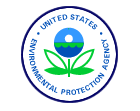
Land Treatment Systems...
Description...
Land (surface) treatment systems (Figures 1 and 2) are permitted in some states, but are not widely used because of their large land area requirements exacerbated by code-required setbacks. For example, a spray irrigation system requires about four times the area of an individual home lagoon. When these systems are used, large buffer areas and fencing may be
required to ensure minimal human exposure. Also, given the nature of these systems, all requirements include disinfection
and significant pretreatment before application. In wet and cold areas, an additional basin for storage or a larger dosing tank is necessary to eliminate possible runoff from the application area. The most used variation of these systems is the spray irrigation system (Figure 3).
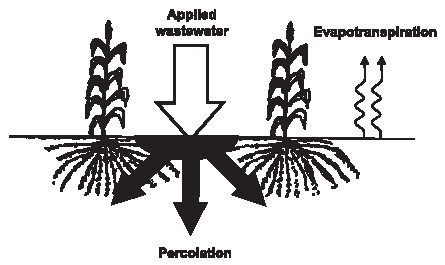
Figure 1. Conceptual schematic of spray irrigation system.
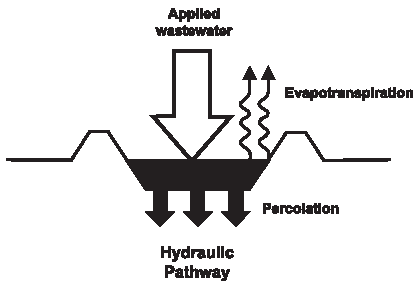
Figure 2. Conceptual schematic of rapid infiltration system.

Figure 3. Typical residential spray irrigation systems.
Spray irrigation systems distribute wastewater evenly on a vegetated plot for final treatment and discharge. Spray
irrigation can be useful in areas where conventional onsite wastewater systems are unsuitable due to low soil permeability, shallow water depth table or impermeable layer, or complex site topography. Spray irrigation is not often used for residential onsite systems because of its large areal demands, the need to discontinue spraying during extended periods of cold weather, and the high potential for human contact with the wastewater during spraying. Spray irrigation systems are among the most land-intensive disposal systems. Drifting aerosols from spray heads can be a nuisance and must be monitored for impact on nearby land use and potential human contact. Buffer zones for residential systems must often be as large as,
or even larger than, the spray field itself to minimize problems.
In a spray irrigation system, pretreatment of the wastewater is normally provided by a septic tank (primary clarifier) and aerobic unit, as well as a sand (media) filter and disinfection unit. Some states do not require the aerobic unit if the filter is used. The pretreated wastewater in spray irrigation systems is applied at low rates to grassy or wooded areas. Vegetation and soil microorganisms metabolize most nutrients and organic compounds in the wastewater during percolation through the first several inches of soil. The cleaned water is then absorbed by deep-rooted vegetation, or it passes
through the soil to the ground water.
Rapid infiltration (RI) is a soil-based treatment method in which pretreated (clarified) wastewater is applied
intermittently to a shallow earthen basin with exposed soil surfaces. It is only used where permeable soils, which
generally can accept a conventional OWTS, are available. Because loading rates are high, most wastewater infiltrates
the subsoil with minimal losses to evaporation. Treatment occurs within the soil before the wastewater reaches the
ground water. The RI alternative is rarely used for onsite wastewater management. It is more widely used as a
small-community wastewater treatment system in the United States and around the world.
The third and last type of land surface treatment is the overland flow (OF) process. In this system, pretreated wastewater
is spread along a contour at the top of a gently sloping site that has minimum permeability. The wastewater then flows down the slope and is treated by microorganisms attached to vegetation as it travels by sheet flow over very impermeable soils until it is collected at the bottom of the slope for discharge. This system (Figure 4) requires land areas similar to the spray irrigation system. However, surface water discharge requirements (e.g., disinfection) from the OF system must still
be met. Overland flow, like rapid infiltration, is rarely used for onsite wastewater management.
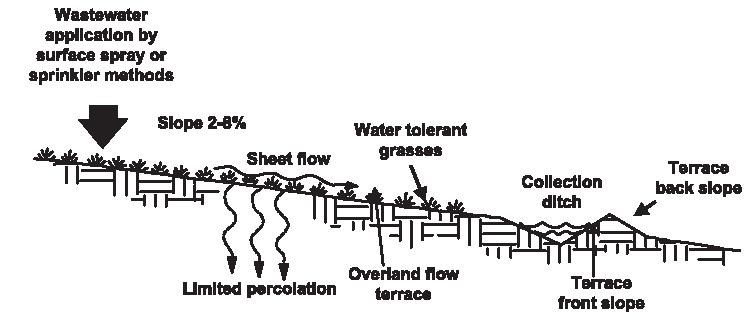
Figure 4. Overland flow system schematic.
Typical Applications...
Spray irrigation (SI) is normally considered at site locations that do not permit a conventional SWIS because of relative impermeability and shallow depths caused by restrictive conditions (e.g., ground water or impermeable bedrock or fragipan). SI is normally the final step in the treatment sequence as the effluent is reintroduced to the environment. Most states require advanced treatment and disinfection prior to SI treatment.
Design Assumptions...
After pretreatment, which at a minimum should be a typical ISF effluent followed by disinfection, the treated wastewater is conveyed to a holding tank with a pump and controls that deliver it to the sprinkler system. The sprinklers spread the wastewater over a predetermined area at specific times. In wet climates or frozen soil conditions, an additional holding (storage) basin or larger dosing tank is required to prevent irrigation during periods when the wastewater would not be accepted by the soil for treatment and intended environmental incorporation. Regulations for buffer requirements from Texas, Virginia, and Pennsylvania are incorporated into Table 1. Typically, the features listed below and their peripheral buffer zones are fenced to prevent exposure.
Application rates vary. Texas determines design rates based on evaporation, Virginia bases rates on soil texture, and Pennsylvania uses a combination of soil depth and slope. From a performance code approach, the application rate should be based on protecting the receiving surface/ground waters. It should be based on wastewater characteristics, critical constituent required concentrations (at a monitoring location where a specific quality standard must be met), and the characteristics of the site (i.e., features that will mitigate wastewater contaminants in order to meet the constituent concentration at the point of use).
In practical terms, all three states require the same pretreatment sequence, which yields SI influent of approximately 5,
5, 25, and 4 mg/L of CBOD, TSS, TN, and TP, respectively, in addition to a fecal coliform (FC) level of about 10 cfu/100 mL (if the disinfection step is working properly). Passage through 1 foot of unsaturated soil should for a few years remove
most CBOD, TSS, TP, and FC; therefore, nitrogen will be the constituent of most concern. During the growing season, removal should be feasible by crop uptake and, to a lesser degree, ammonia volatilization.
Therefore, the hydraulic and nitrogen loading rates for a specific site are the primary design parameter. Also, these
systems are rarely considered for permeable soils. The design approach described below is for this set of circumstances.
Spray irrigation systems are designed to treat wastewater and evenly distribute the effluent on a vegetated lot for final treatment. The application rate is determined by two major factors: hydraulic loading and nutrient loading (usually
nitrogen is the limiting factor). The application rate is designed to meet the capacity of the soil to accept the effluent hydraulically and subsequently allow it to drain through the soil. The application rate can be varied according to the permeability of the soil. In Pennsylvania and Virginia, this method results in application rates of 0.6 to 2.5 cm/week.
Lower rates can greatly improve nitrogen removal. The treated wastewater is spread over the required application area
through a sprinkler or drip irrigation system.
Sprinklers are generally low-angle (7 to 13 degrees), large-drop-size nozzles designed to minimize aerosols. Application areas must be vegetated (with crops not intended for human consumption) and have slopes that preclude runoff to streams.
The type of vegetation determines the nitrogen loading capacity of the site, but the hydraulic capacity depends on climate and soil characteristics. Additional nitrogen losses may occur through denitrification (only about 25 percent due to the
low BOD:N ratio) and ammonia volatilization (about 10 percent if soil pH is high; less to none if it is acidic).
Spray irrigation of wastewater effluent must be timed to coincide with plant uptake and nutrient use. Temperature factors
in some areas of the country may preclude the use of spray irrigation during certain times of the year. The wastewater may need to be stored in holding tanks during the coldest period of the year, because plant growth is limited and the nitrogen
in effluent discharged during this time will be mineralized and unavailable for plant uptake.
Some SI systems irrigate only one or two days per week so that the soil can drain and aerate between applications.
Others spray twice during the night or in the early morning to minimize inconvenience to the homeowner and to minimize
the potential for human contact.
The width of the required buffer zone depends on the slope of the site, the average wind direction and velocity, the type
of vegetation, and the types of nearby land uses. For wastewater produced by a single-family home, the minimum recommended
SI plot area, including buffer zones, is commonly about 2 acres (0.81 hectares) in Pennsylvania and Virginia.
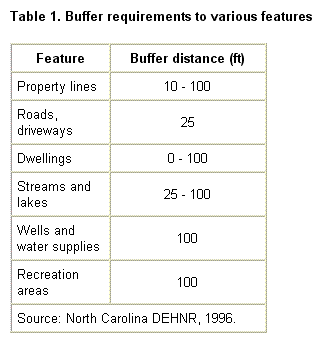
Performance...
Studies that sample both the soil below the spray field and its runoff show that spray irrigation systems work as well as other methods of managing wastewater. Spray irrigation systems are designed for no degradation; therefore, hydraulic and nutrient loading rates are based on the type of vegetation used and the hydraulic properties of the soils. If the vegetation cannot assimilate the amount of nitrogen applied, for example, then nitrogen removal to reduce the nitrogen content of the effluent prior to spray irrigation may be required. The overall efficiency of a spray irrigation system in removing pollutants will be a function of the pollutant removal efficiencies of the entire treatment process and plant uptake.
There have been few documented cases of health problems due to the spray irrigation, but use of proper buffer zones is crucial. One benefit of spray irrigation is savings on potable water because the wastewater is used for irrigation.
Management Needs...
Construction factors include site preparation and installation of runoff controls, irrigation piping, return systems, and storage facilities. Since sustained wastewater infiltration is an important component of successful system operation, it is critical that construction activity be limited on the application site. Where stormwater runoff can be significant, measures must be taken to prevent excessive erosion, including terracing of steep slopes, contour plowing, no-till farming, establishment of grass border strips, and installation of sediment control basins. Earthworking operations should be conducted in such a way as to minimize soil compaction. Soil moisture should generally be low during these operations. High-flotation tires are recommended for all construction vehicles.
The soil profile must also be managed to maintain infiltration rates by avoiding soil compaction and maintaining soil chemical balance. Compaction and surface sealing (caused by harvesting equipment and development of fine layers from
multiple wastewater applications) can reduce soil infiltration and increase runoff.
Local regulatory agencies may require ground water monitoring to evaluate system performance. Soil fertility and chemical balance should be evaluated periodically to determine if soil amendments are necessary. Trace elements may also be analyzed to monitor possibly toxic accumulations.
Residuals produced by slow-rate land application systems are limited to harvested crops and crop residues that are not for human consumption. Agricultural crop applications require the most intensive management, while forest application requires the least management. Management tasks may include soil tillage, planting and harvesting of crops, nutrient control, pH adjustment, and sodium and salinity control. No special equipment, other than the appropriate agricultural equipment, is required. Typical pump, controls, and basin requirements prevail for the dosing system.
Virginia's O/M requirements for onsite spray irrigation systems (not including pretreatment unit processes) include the following :
Monthly. Walk over spray area and examine for :
- Ponding of effluent
- Bad odors
- Damage to spray heads
- Surfacing liquids
- Vegetation problems
- Surface soil collapse
Quarterly. Conducted by a qualified, semi-skilled operator :
- Proper spray sequence
- Proper pump function
- Proper liquid levels
Biannually :
- Erosion
- Storage unit capacity
Annually. Effluent sampling by a certified laboratory :
- Test water supplied to spray irrigation area for pH, total Kjeldahl nitrogen, fecal coliform bacteria, chlorine, TSS, and BOD
- Reports of analyses are to be submitted by the laboratory to the local/district health department within 10 days of the completion of the analyses.
A management contract with an approved operator or operations firm is also required.
Risk Management Issues...
No crops grown on the SI application area should be consumed by humans. Buffer zones should minimize aerosol exposure.
Spray irrigation systems with sufficient storage capacity are essentially unaffected by major flow variations. A water balance should be conducted to determine the need under the climate conditions, soils, and application rates and patterns
of each rate. Similarly, toxic shock loadings should be largely dissipated in the preceding pretreatment steps, but phytotoxic compounds may still be a concern at the application site. Spray irrigation cannot function during saturated or frozen conditions, and the pretreated influent must be stored until proper vegetative uptake (usually nitrogen) conditions return. Power outages will affect the upstream pretreatment processes rather than the SI system, even though the system
must have power to function.
However, by the time the wastewater effluent is discharged by the sprinklers, the water should be sufficiently treated so
as not to pose health risks. There have been no documented cases of health problems due to the spray irrigation of properly treated wastewater. However, drifting aerosols from the spray heads should be monitored for impact on nearby land uses. A benefit of spray irrigation is the use of effluent, instead of potable tap water, to water the landscape.
Costs...
Construction costs of SI systems are very high if the generally required pretreatment is included, especially if both an aerobic unit and a sand filter treating septic tank effluent are included. Such a system could easily cost $20,000 or
more. O/M costs for the SI system alone primarily include labor (15 to 20 hours per year), power (for pumps and other pretreatment needs) and materials (e.g., chlorine, if chosen). O/M costs are estimated at more than $500 per year, given
the entire treatment train suggested by figure 3. If the aerobic treatment unit is not required ahead of the sand filter,
and a UV disinfection unit is used, this cost may reduce to $300 to $400 annually.







